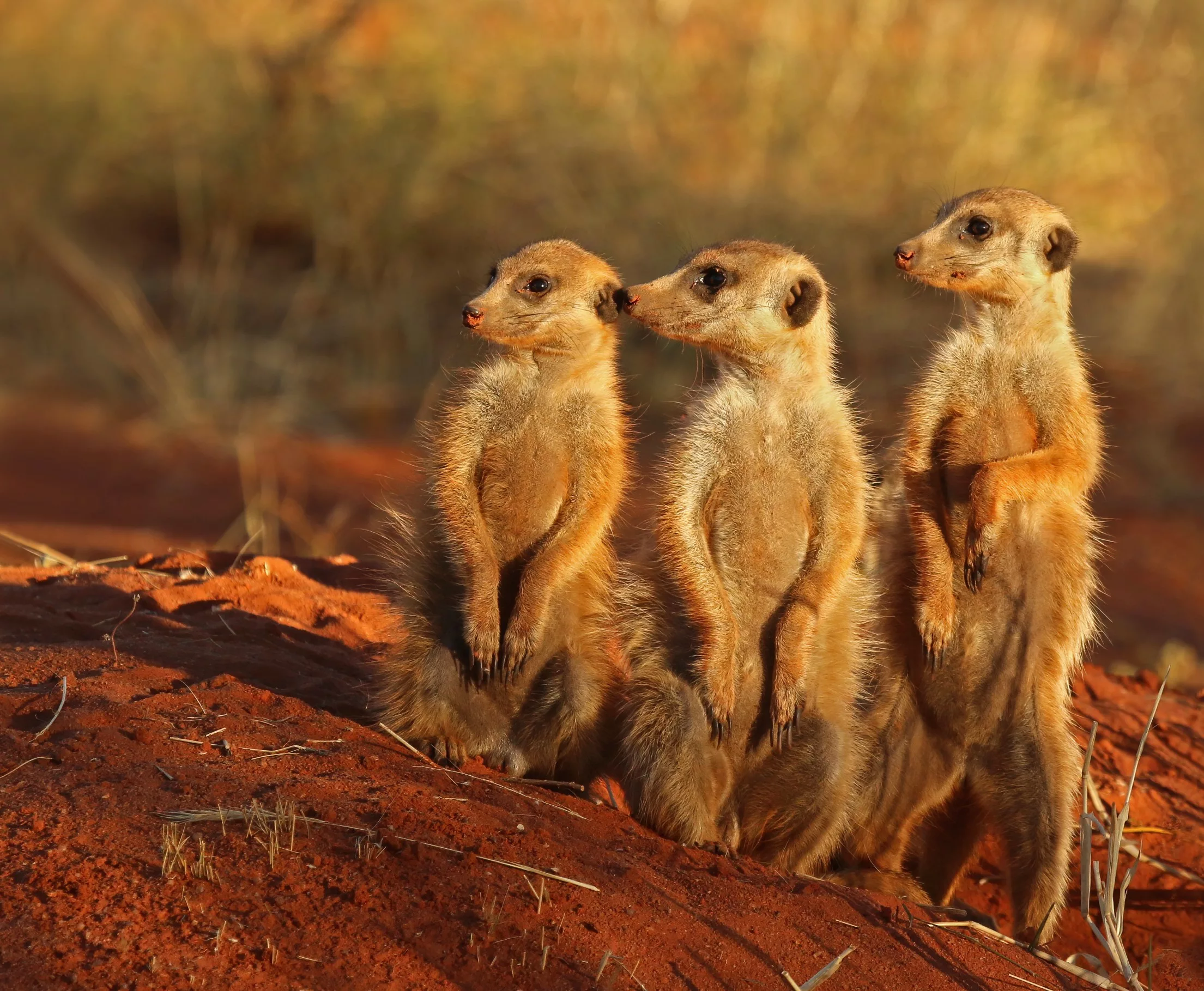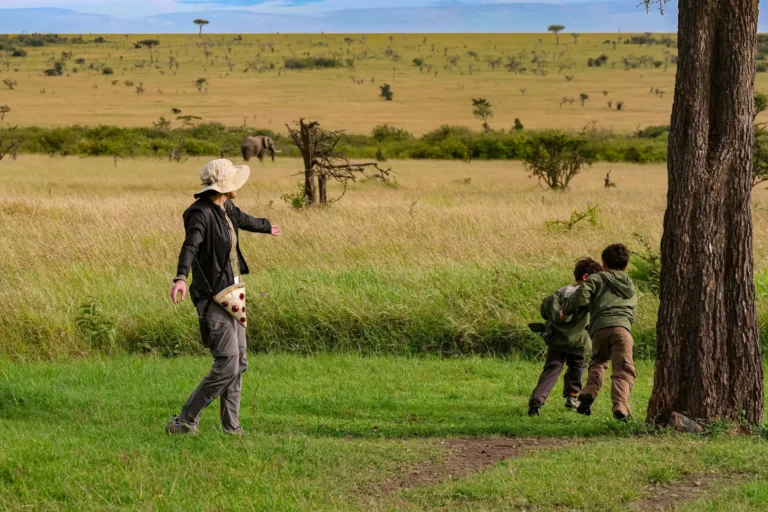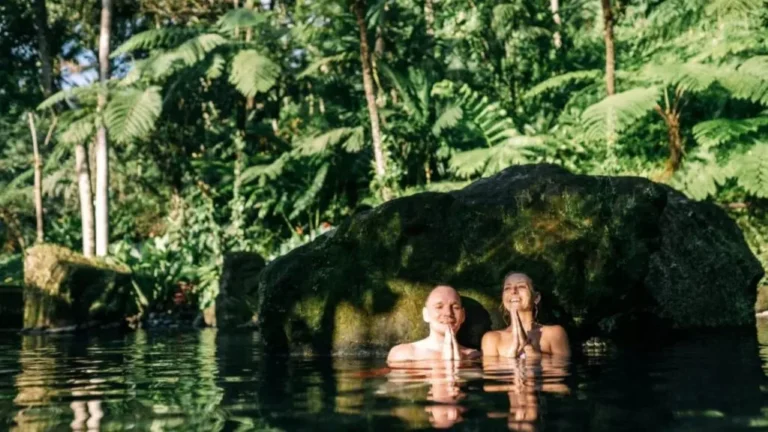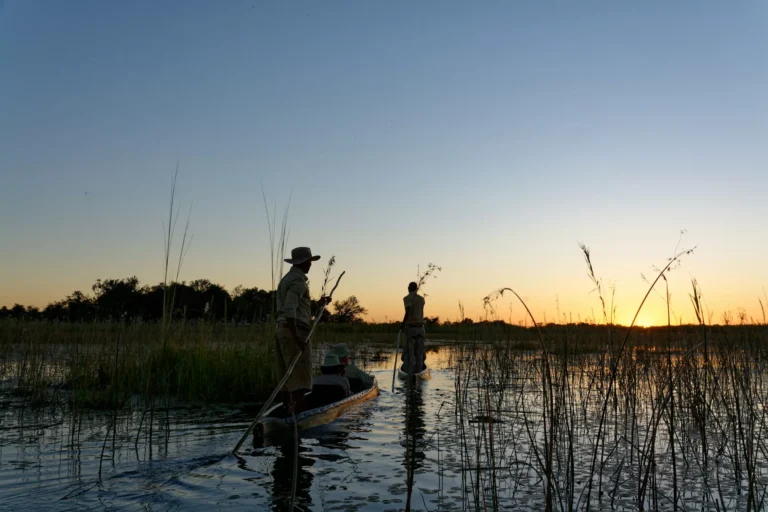Wildlife you can see outside Big Five reserves
The Big Five—lion, leopard, elephant, rhino, and buffalo—have long dominated the safari spotlight. But South Africa and its neighbours offer so much more if you slow down, go seasonal, or travel slightly off-track.
Whether you’re into birds, rare mammals, or coastal giants, here’s where to find unforgettable wildlife without entering a Big Five game reserve.
Flamingos

Picture for illustration purposes/Olga Ernst/Wikimedia Commons
When flamingos descend on pans and wetlands, the water turns pink. Kamfers Dam outside Kimberley is one of only a few breeding sites for lesser flamingos in Africa. But that’s just the beginning.
More flamingo hotspots:
- Rietvlei Nature Reserve (between Pretoria and Johannesburg): Regular flamingo sightings
- Schuinsdraai Nature Reserve (near Tzaneen)
- Strandfontein Birding Area and Rondevlei Nature Reserve (Cape Town)
- Langebaan Lagoon (West Coast National Park)
- Lake Chrissie (Mpumalanga)
- Orange River Estuary, Spitskop Dam, and Velddrift Salt Works
Best time to visit: Late summer to early autumn
Bat-eared foxes

Bat-eared fox, Kgalagadi Transfrontier Park/Derek Keats/Wikimedia Commons
With comically oversized ears and a shy disposition, bat-eared foxes are most active at dawn and dusk. Tankwa Karoo National Park is one of the best places to see them, especially in cooler months, but not the only one.
Other reliable spots:
- Aquila Game Reserve (less than an hour from Gansbaai)
- Namaqua National Park (5 hours north of Paternoster)
- Garden Route Game Reserve (44 km from Mossel Bay)
Best time to visit: Winter months for easier sightings
ALSO READ: Suspected poacher killed in shootout with rangers at Kruger
Meerkats

Meerkats at Tswalu Kalahari/Charles J. Sharp/Wikimedia Commons
South Africa’s meerkat encounters are some of the best anywhere. Early-morning tours let you sit quietly as these social diggers emerge from burrows, warm up in the sun, and begin foraging.
Top places to see them:
- De Zeekoe Guest Farm (outside Oudtshoorn on Route 62)
- Tswalu Kalahari Private Game Reserve
- Addo Elephant National Park (yes, even in Big Five parks, it’s worth going beyond the headline species)
Best time to visit: Year-round
Whales

Bryde’s Whale in False Bay/Jolene Bertoldi/Wikimedia Commons
Between June and November, the Western Cape and Eastern Cape coastlines become marine safari territory. Southern right whales breach, tail-slap and calve just offshore.
Great land-based whale watching locations:
- De Hoop Nature Reserve
- Hermanus and Witsand
- False Bay (via Boyes Drive, Clarence Drive, and Chapman’s Peak)
- Brass Bell restaurant (Kalk Bay)
- Train ride from Muizenberg to Simon’s Town
- Nature’s Valley and St. Sebastian Bay
- Cape Agulhas, Atlantic Seaboard (Cape Town)
- Elephant Coast (KwaZulu-Natal)
- Wild Coast (Eastern Cape)
Best time to visit: July to October
Aardvarks and pangolins
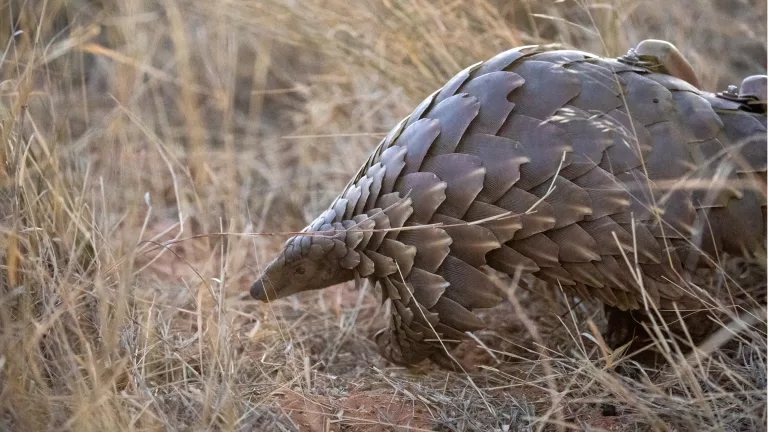
Pangolin monitoring in the Kalahari/WildlifeConservationist/Wikimedia Commons
These shy, nocturnal animals are bucket-list sightings. Reserves that focus on conservation, such as Tswalu Kalahari and Samara Karoo, offer rare opportunities to spot them in the wild.
Where to go:
- Tswalu Kalahari Reserve
- Samara Karoo Reserve
- Khamab Kalahari Reserve
Best time to visit: Winter, when they emerge earlier in the evening
Antelopes

Sable antelope at Tswalu Kalahari/Charles J. Sharp/Wikimedia Commons
South Africa’s other game is often overlooked—but sable, steenbok, klipspringers, and dik-diks are agile, fascinating, and widely distributed. The Mountain Zebra National Park is a great place to start.
Can also be seen in:
- Karoo National Park
- Cederberg Wilderness Area
Best time to visit: Year-round
Birds
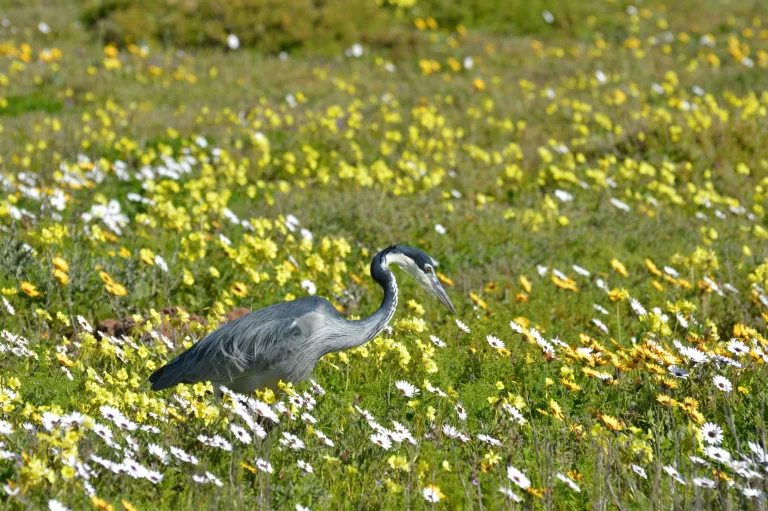
A black-headed heron at West Coast National Park/Discott/Wikimedia Commons
From martial eagles to Narina trogons, over 800 bird species live in South Africa. Visit during the spring flower season, or follow a birding guide into forested escarpments and coastal lagoons.
Top birding locations:
- West Coast National Park (especially during wildflower season)
- Magoebaskloof Forests
- Northern Kruger (Punda Maria area)
Best time to visit: Spring for flowers, summer for migrants
African Wild dogs
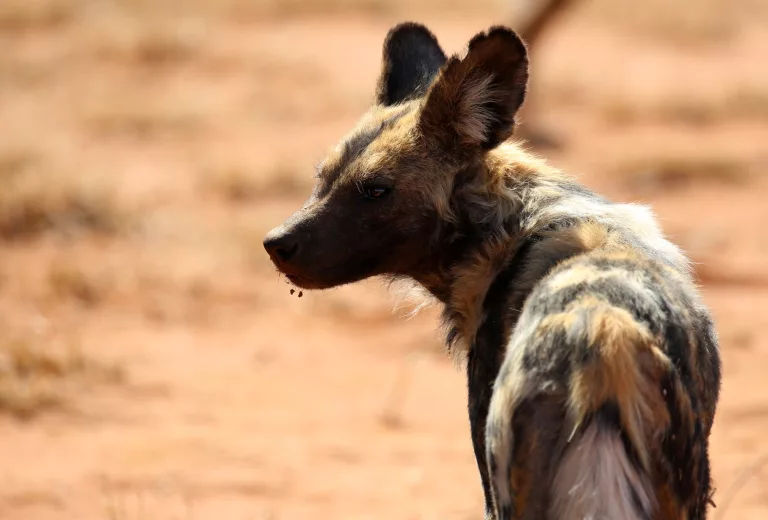
African Wild Dog/Flowcomm/Wikimedia Commons
Highly endangered and deeply charismatic, African wild dogs are known for their stamina, intelligence, and strong pack bonds. Though not commonly seen, a few South African reserves are giving these animals space to roam and thrive.
Best chances to spot them:
- Kruger’s northern regions (especially around Pafuri)
- Madikwe Game Reserve (North West Province)
- Hluhluwe-iMfolozi Park (KZN)
- Waterberg Biosphere (home to reintroduction projects)
- Tembe Elephant Park and Zimanga Private Reserve (KZN)
Best time to visit: Dry season (winter) when tracking is easier
Stay longer, travel slower, and let local guides help you track the more elusive or eccentric creatures. Many of these species require little more than patience, binoculars, and a good pair of walking shoes.
Follow us on social media for more travel news, inspiration, and guides. You can also tag us to be featured.
TikTok | Instagram | Facebook | Twitter
ALSO READ: Best places to learn something wild
Moving to Kenya Watch this

